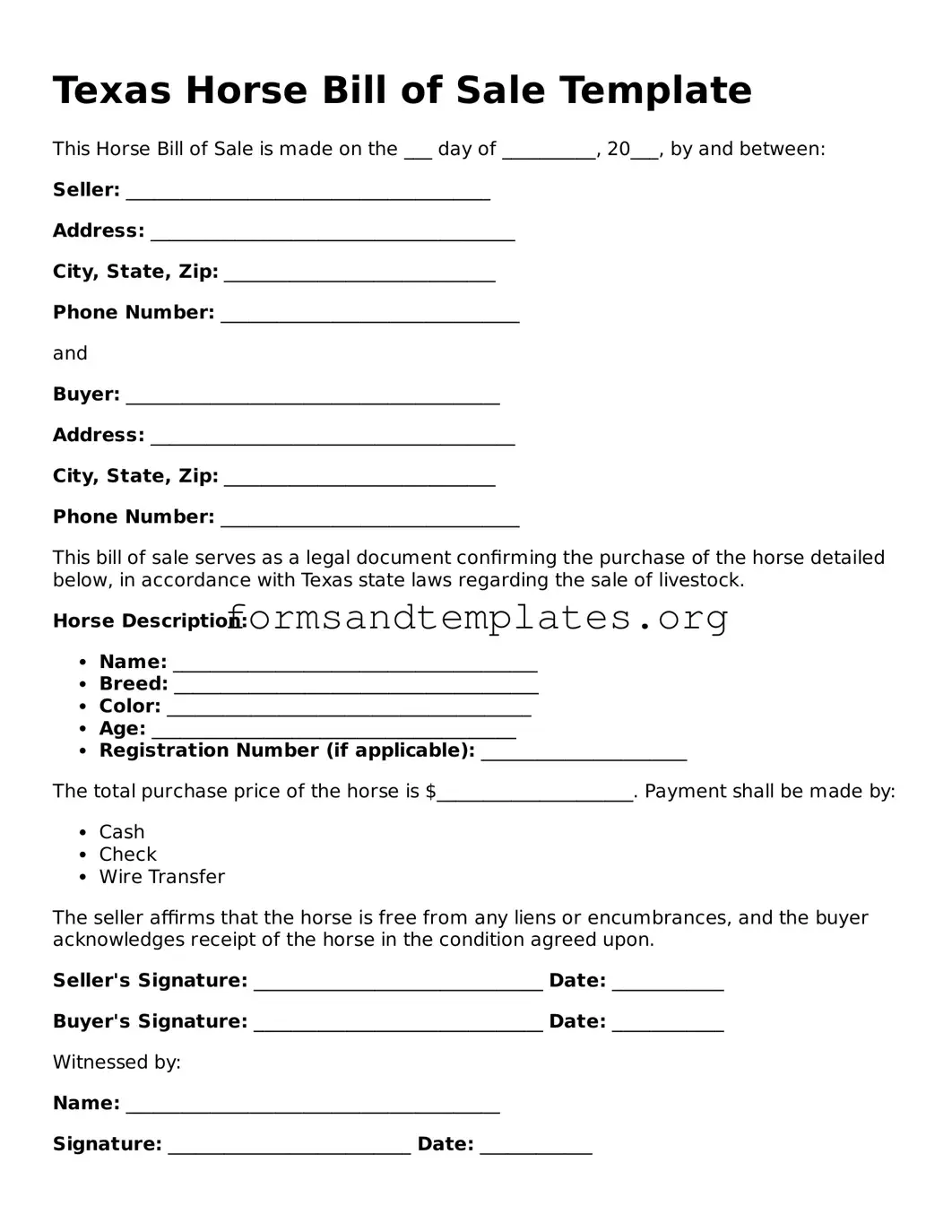Texas Horse Bill of Sale Template
This Horse Bill of Sale is made on the ___ day of __________, 20___, by and between:
Seller: _______________________________________
Address: _______________________________________
City, State, Zip: _____________________________
Phone Number: ________________________________
and
Buyer: ________________________________________
Address: _______________________________________
City, State, Zip: _____________________________
Phone Number: ________________________________
This bill of sale serves as a legal document confirming the purchase of the horse detailed below, in accordance with Texas state laws regarding the sale of livestock.
Horse Description:
- Name: _______________________________________
- Breed: _______________________________________
- Color: _______________________________________
- Age: _______________________________________
- Registration Number (if applicable): ______________________
The total purchase price of the horse is $_____________________. Payment shall be made by:
The seller affirms that the horse is free from any liens or encumbrances, and the buyer acknowledges receipt of the horse in the condition agreed upon.
Seller's Signature: _______________________________ Date: ____________
Buyer's Signature: _______________________________ Date: ____________
Witnessed by:
Name: ________________________________________
Signature: __________________________ Date: ____________
This document serves as a binding agreement between the parties mentioned above. It is recommended that both parties retain a copy for their records.
Note: This Bill of Sale template is designed for use in the state of Texas and complies with applicable laws governing the sale of a horse in that jurisdiction.
